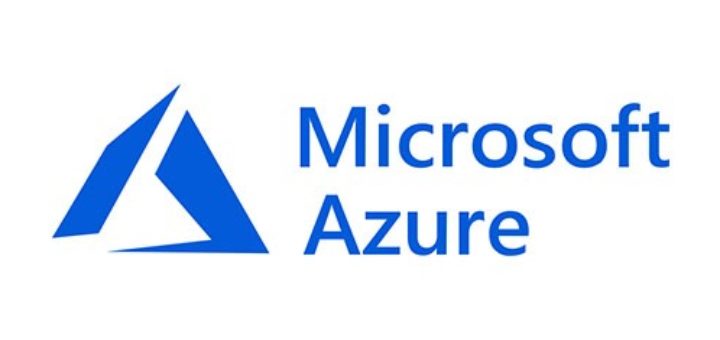1) What is PL SQL ?
PL SQL is a procedural language which has interactive SQL, as well as procedural programming language constructs like conditional branching and iteration.
2) Differentiate between % ROWTYPE and TYPE RECORD.
% ROWTYPE is used when a query returns an entire row of a table or view.
TYPE RECORD, on the other hand, is used when a query returns column of different tables or views.
Eg. TYPE r_emp is RECORD (sno smp.smpno%type,sname smp sname %type)
e_rec smp %ROWTYPE
Cursor c1 is select smpno,dept from smp;
e_rec c1 %ROWTYPE
3) Explain uses of cursor.
Cursor is a named private area in SQL from which information can be accessed. They are required to process each row individually for queries which return multiple rows.
4) Show code of a cursor for loop.
Cursor declares %ROWTYPE as loop index implicitly. It then opens a cursor, gets rows of values from the active set in fields of the record and shuts when all records are processed.
Eg. FOR smp_rec IN C1 LOOP
totalsal=totalsal+smp_recsal;
ENDLOOP;
5) Explain the uses of database trigger.
A PL/SQL program unit associated with a particular database table is called a database trigger. It is used for :
1) Audit data modifications.
2) Log events transparently.
3) Enforce complex business rules.
4) Maintain replica tables
5) Derive column values
6) Implement Complex security authorizations
6) What are the two types of exceptions.
Error handling part of PL/SQL block is called Exception. They have two types : user_defined and predefined.
7) Show some predefined exceptions.
DUP_VAL_ON_INDEX
ZERO_DIVIDE
NO_DATA_FOUND
TOO_MANY_ROWS
CURSOR_ALREADY_OPEN
INVALID_NUMBER
INVALID_CURSOR
PROGRAM_ERROR
TIMEOUT _ON_RESOURCE
STORAGE_ERROR
LOGON_DENIED
VALUE_ERROR
etc.
8) Explain Raise_application_error.
It is a procedure of package DBMS_STANDARD that allows issuing of user_defined error messages from database trigger or stored sub-program.
9) Show how functions and procedures are called in a PL SQL block.
Function is called as a part of an expression.
total:=calculate_sal(‘b644’)
Procedure is called as a statement in PL/SQL.
calculate_bonus(‘b644’);
10) Explain two virtual tables available at the time of database trigger execution.
Table columns are referred as THEN.column_name and NOW.column_name.
For INSERT related triggers, NOW.column_name values are available only.
For DELETE related triggers, THEN.column_name values are available only.
For UPDATE related triggers, both Table columns are available.
11) What are the rules to be applied to NULLs whilst doing comparisons?
1) NULL is never TRUE or FALSE
2) NULL cannot be equal or unequal to other values
3) If a value in an expression is NULL, then the expression itself evaluates to NULL except for concatenation operator (||)
12) How is a process of PL SQL compiled?
Compilation process includes syntax check, bind and p-code generation processes.
Syntax checking checks the PL SQL codes for compilation errors. When all errors are corrected, a storage address is assigned to the variables that hold data. It is called Binding. P-code is a list of instructions for the PL SQL engine. P-code is stored in the database for named blocks and is used the next time it is executed.
13) Differentiate between Syntax and runtime errors.
A syntax error can be easily detected by a PL/SQL compiler. For eg, incorrect spelling.
A runtime error is handled with the help of exception-handling section in an PL/SQL block. For eg, SELECT INTO statement, which does not return any rows.
14) Explain Commit, Rollback and Savepoint.
For a COMMIT statement, the following is true:
- Other users can see the data changes made by the transaction.
- The locks acquired by the transaction are released.
- The work done by the transaction becomes permanent.
A ROLLBACK statement gets issued when the transaction ends, and the following is true.
- The work done in a transition is undone as if it was never issued.
- All locks acquired by transaction are released.
It undoes all the work done by the user in a transaction. With SAVEPOINT, only part of transaction can be undone.
15) Define Implicit and Explicit Cursors.
A cursor is implicit by default. The user cannot control or process the information in this cursor.
If a query returns multiple rows of data, the program defines an explicit cursor. This allows the application to process each row sequentially as the cursor returns it.
16) Explain mutating table error.
It occurs when a trigger tries to update a row that it is currently using. It is fixed by using views or temporary tables, so database selects one and updates the other.
17) When is a declare statement required?
DECLARE statement is used by PL SQL anonymous blocks such as with stand alone, non-stored procedures. If it is used, it must come first in a stand alone file.
18) How many triggers can be applied to a table?
A maximum of 12 triggers can be applied to one table.
19) What is the importance of SQLCODE and SQLERRM?
SQLCODE returns the value of the number of error for the last encountered error whereas SQLERRM returns the message for the last error.
20) If a cursor is open, how can we find in a PL SQL Block?
the %ISOPEN cursor status variable can be used.
21) Show the two PL/SQL cursor exceptions.
Cursor_Already_Open
Invaid_cursor
22) What operators deal with NULL?
NVL converts NULL to another specified value.
var:=NVL(var2,’Hi’);
IS NULL and IS NOT NULL can be used to check specifically to see whether the value of a variable is NULL or not.
23) Does SQL*Plus also have a PL/SQL Engine?
No, SQL*Plus does not have a PL/SQL Engine embedded in it. Thus, all PL/SQL code is sent directly to database engine. It is much more efficient as each statement is not individually stripped off.
24) What packages are available to PL SQL developers?
DBMS_ series of packages, such as, DBMS_PIPE, DBMS_DDL, DBMS_LOCK, DBMS_ALERT, DBMS_OUTPUT, DBMS_JOB, DBMS_UTILITY, DBMS_SQL, DBMS_TRANSACTION, UTL_FILE.
25) Explain 3 basic parts of a trigger.
- A triggering statement or event.
- A restriction
- An action
26) What are character functions?
INITCAP, UPPER, SUBSTR, LOWER and LENGTH are all character functions. Group functions give results based on groups of rows, as opposed to individual rows. They are MAX, MIN, AVG, COUNT and SUM.
27) Explain TTITLE and BTITLE.
TTITLE and BTITLE commands that control report headers and footers.
28) Show the cursor attributes of PL/SQL.
%ISOPEN : Checks if the cursor is open or not
%ROWCOUNT : The number of rows that are updated, deleted or fetched.
%FOUND : Checks if the cursor has fetched any row. It is true if rows are fetched
%NOT FOUND : Checks if the cursor has fetched any row. It is True if rows are not fetched.
29) What is an Intersect?
Intersect is the product of two tables and it lists only matching rows.
30) What are sequences?
Sequences are used to generate sequence numbers without an overhead of locking. Its drawback is that the sequence number is lost if the transaction is rolled back.
31) How would you reference column values BEFORE and AFTER you have inserted and deleted triggers?
Using the keyword “new.column name”, the triggers can reference column values by new collection. By using the keyword “old.column name”, they can reference column vaues by old collection.
32) What are the uses of SYSDATE and USER keywords?
SYSDATE refers to the current server system date. It is a pseudo column. USER is also a pseudo column but refers to current user logged onto the session. They are used to monitor changes happening in the table.
33) How does ROWID help in running a query faster?
ROWID is the logical address of a row, it is not a physical column. It composes of data block number, file number and row number in the data block. Thus, I/O time gets minimized retrieving the row, and results in a faster query.
34) What are database links used for?
Database links are created in order to form communication between various databases, or different environments like test, development and production. The database links are read-only to access other information as well.
35) What does fetching a cursor do?
Fetching a cursor reads Result Set row by row.
36) What does closing a cursor do?
Closing a cursor clears the private SQL area as well as de-allocates memory
37) Explain the uses of Control File.
It is a binary file. It records the structure of the database. It includes locations of several log files, names and timestamps. They can be stored in different locations to help in retrieval of information if one file gets corrupted.
38) Explain Consistency
Consistency shows that data will not be reflected to other users until the data is commit, so that consistency is maintained.
39) Differ between Anonymous blocks and sub-programs.
Anonymous blocks are unnamed blocks that are not stored anywhere whilst sub-programs are compiled and stored in database. They are compiled at runtime.
40) Differ between DECODE and CASE.
DECODE and CASE statements are very similar, but CASE is extended version of DECODE. DECODE does not allow Decision making statements in its place.
select decode(totalsal=12000,’high’,10000,’medium’) as decode_tesr from smp where smpno in (10,12,14,16);
This statement returns an error.
CASE is directly used in PL SQL, but DECODE is used in PL SQL through SQL only.
41) Explain autonomous transaction.
An autonomous transaction is an independent transaction of the main or parent transaction. It is not nested if it is started by another transaction.
There are several situations to use autonomous transactions like event logging and auditing.
42) Differentiate between SGA and PGA.
SGA stands for System Global Area whereas PGA stands for Program or Process Global Area. PGA is only allocated 10% RAM size, but SGA is given 40% RAM size.
43) What is the location of Pre_defined_functions.
They are stored in the standard package called “Functions, Procedures and Packages”
44) Explain polymorphism in PL SQL.
Polymorphism is a feature of OOP. It is the ability to create a variable, an object or function with multiple forms. PL/SQL supports Polymorphism in the form of program unit overloading inside a member function or package..Unambiguous logic must be avoided whilst overloading is being done.
45) What are the uses of MERGE?
MERGE is used to combine multiple DML statements into one.
Syntax : merge into tablename
using(query)
on(join condition)
when not matched then
[insert/update/delete] command
when matched then
[insert/update/delete] command
46) Can 2 queries be executed simultaneously in a Distributed Database System?
Yes, they can be executed simultaneously. One query is always independent of the second query in a distributed database system based on the 2 phase commit.
47) Explain Raise_application_error.
It is a procedure of the package DBMS_STANDARD that allow issuing a user_defined error messages from the database trigger or stored sub-program.
48) What is out parameter used for eventhough return statement can also be used in pl/sql?
Out parameters allows more than one value in the calling program. Out parameter is not recommended in functions. Procedures can be used instead of functions if multiple values are required. Thus, these procedures are used to execute Out parameters.
49) How would you convert date into Julian date format?
We can use the J format string :
SQL > select to_char(to_date(’29-Mar-2013′,’dd-mon-yyyy’),’J’) as julian from dual;
JULIAN
50) Explain SPOOL
Spool command can print the output of sql statements in a file.
spool/tmp/sql_outtxt
select smp_name, smp_id from smp where dept=’accounts’;
spool off;



